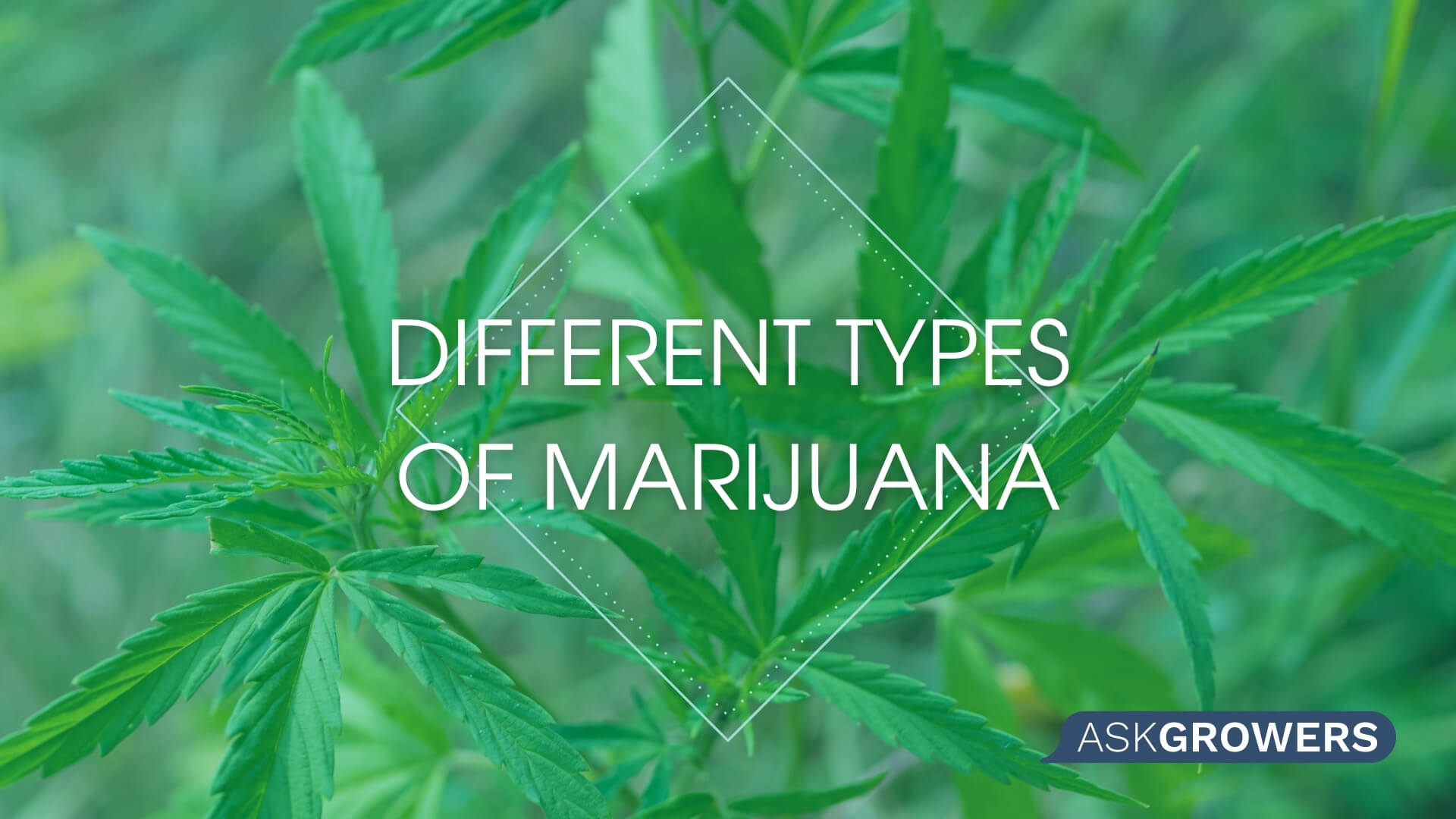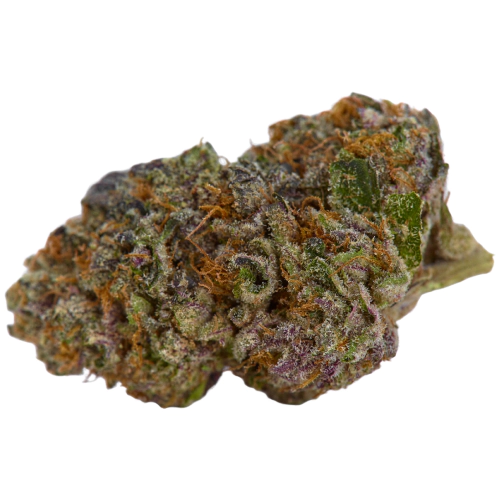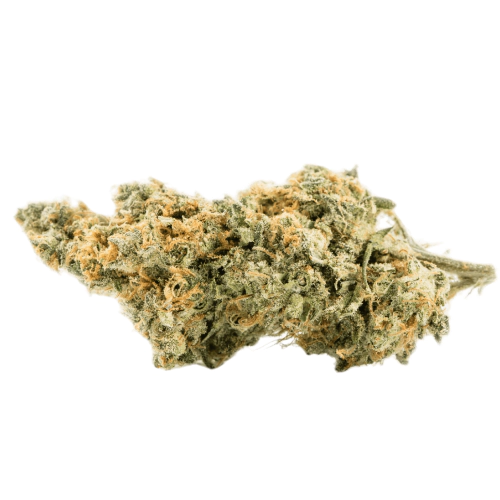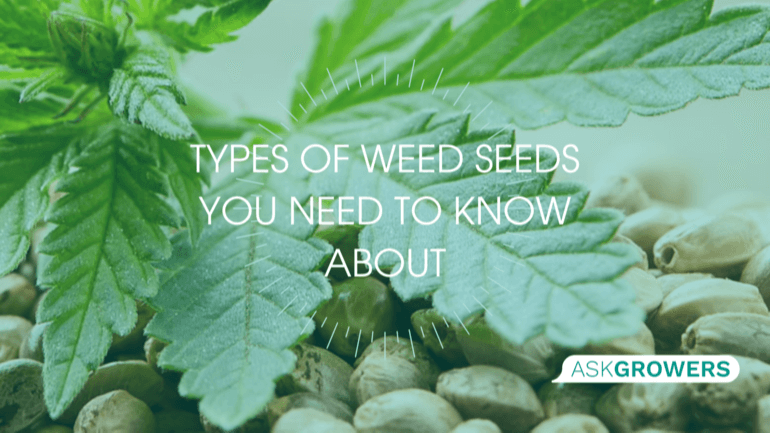Types of Weed: Indica, Sativa, and Ruderalis – Differences Among Marijuana Types

Marijuana is not a single type of plant. In fact, what we call “marijuana” is actually a group of sub-species of the plant called Cannabis sativa, namely C. sativa subsp sativa, C. sativa subsp indica, and C. sativa subsp ruderalis (McPartland, 2018). Most of us, however, prefer to call these adorable plants by their “last names;” that is, Sativa, Indica, and Ruderalis.
The attention to the taxonomy of cannabis, or simply put, the classification of its types and species, was drawn by the fact that not all weed has the same properties and effects on the human body; Sativa is generally thought to make you energetic, while most people believe Indica will make you sleepy, relaxed, and hungry. It turns out, one of the reasons for such variability of the effects lies in the different genetics of these subspecies, which in turn impacts their biology and composition. Another reason is the way the human body interacts with the substances contained in weed. This, and much more, will be covered in this article.
Read Also: Types of Weed Seeds You Need to Know About
History of Discovering Indica and Sativa
The historical evidence suggests that Cannabis has been known to humans for around 12,000 years. It is likely that the people of Central, or according to another version, South-East Asia should be credited for its discovery (Crocq, 2020). Back then, different types of marijuana were used for different purposes; some were used for fiber, others were gathered for their psychotropic properties.
Around 3,000 years ago, the first documented evidence of an artificially-bred strain of marijuana with a high content of THC, which suggests that people not only had discovered its psychotropic effects but also took advantage of them. Medicinal use also began in Asia; it was widely used in China and India. It had also become a significant part of ayurvedic medicine and was even used to worship one of the gods named Shiva. Later on, it was moved to other parts of the world, and by the 18th century, it had been known on all continents.

After all these years, cannabis is still being used for the same purposes, although its cultivation has become a lot more sophisticated. We now better understand how to breed cannabis to get the exact type we need. The types that have little to no psychotropic effects have been increasingly used in medicine, while many strains have become available for recreational purposes, which may satisfy the tastes of the most demanding users.
Cannabis Sativa
Sativa is believed to have come from tropical regions, possibly Africa and South America. This is why it is capable of withstanding significant sunlight exposure. Besides, more light is necessary for Sativa cultivation than for Indica.
Plant description : Sativa Cannabis is a tall plant with narrow leaves and stems due to its shorter vegetation stage. Its terpenoid profile makes its odor sweet and herby.
CBD and THC ratio : Wildtype Sativa is a plant with low THC and high CBD levels (McPartland, & Small, 2020) for instance Berry Pie weed strain. However, as with Indica, this ratio may differ in various strains.
Common effects : Sativa strains usually make users feel energetic and creative due to the stimulating effect of THC. Sometimes consuming too much THC can cause paranoid ideations.
Daytime or nighttime : Sativa is preferred in the morning or during the day.
Growing: Sativa usually has a longer flowering stage, which ranges between ten to twelve weeks before the planter can harvest it, and produces less buds than Indica. However, there are strains of Sativa that can take up to sixteen weeks to flower fully and mature. To initiate the flowering stage, light is necessary approximately 12 hours a day.
Cannabis Indica
Origin: Indica is thought to originate from Asia. It is likely that due to the harsh climate, it has adapted to become one of the types of cannabis that are resistant to unfavorable conditions. This is the easiest type of Cannabis to grow. It was first described by Lamarck, who noticed a new type of weed that was different from the previously known one in India. This is why it is called the way it is.
Plant description : There are several important differences between Indica and Sativa. Indica subspecies are short plants with thicker stems, more branches, and broad leaves with dense buds. Cannabis Indica also has a stronger odor than other weed species, which occurs due to the composition of terpenoids that give it the characteristic, “skunky” smell.

CBD and THC ratio : Cannabis Indica has high-THC and low-CBD levels (McPartland, & Small, 2020), although strains with higher CBD levels are available.
Common effects : Indica is more likely to cause relaxing and sedative effects, and make an individual feel stoned. These effects are attributed to a higher THC percentage compared to other subspecies of cannabis.
Daytime or nighttime : Because of its deep relaxation effect, Indica is better consumed before bed.
Growing: Indica plants normally have a short flowering stage, tend to produce many buds for harvest time and grow quicker compared to Sativas. The flowers are usually prominent near the plants’ nodes where the leaves separate from the plant’s stem and bud after six to ten weeks. Indica is a perfect plant to grow at home, because it is resistant to changes in humidity, temperature, and sunlight. Currently, seedless cultivation is increasingly used, which allows for cutting and planting female plants to increase THC content.
Read Also: Features Of Growing Marijuana From Seed: Secrets And Recommendations
Hybrid Cannabis
Hybridization of different types of marijuana plants was possible due to the development of the seedless cultivation technology. The first hybrid plant was created in 1959, but hybrids started to sell in the late 1970’s once cannabis cultivars became reproducible.
Properties. The properties of hybrids vary significantly, depending on which subspecies were used for breeding. As a result, a wide range of various hybrids, including numerous Indica vs Sativa strains, are currently available. In fact, according to the research by John McPartland (2018), who works at the Department of Molecular Biology at GW Pharmaceuticals (Cambridge, UK), hybridization is a ubiquitous phenomenon, with a high number of hybrids based both on C. sativa for instance Motorbreath strain and C. indica look at Dolato weed. The purpose of hybridization is twofold, on the one hand, growers are looking for more easy-to-grow and productive hybrids, while on the other hand, users are looking for cannabis with particular effects. Therefore, it is possible to find practically any type of hybrid with any properties.
Growing: The first hybrid known as Skunk #1 was a result of the invention of seedless cultivation, which allowed for the creation of a hybrid of the Afghan Indica and the Colobmian Sativa, and later with the Mexican Sativa. Currently, many hybrids are available, and the optimal growing conditions, growth and flowering phases, and the amount of harvest may vary.
The most popular hybrid seeds
Cannabis Ruderalis
Ruderalis is thought to have originated from the South of Russia (Gloss, 2015). It is known for its low THC contents and the ability to flower as it gets older regardless of the exposure to light, which is called autoflowering. It is, therefore, often used in breeds in order for them to have that feature.
Due to the low THC levels, Ruderalis is not very popular among cannabis users. However, the types of weed strains that do not have psychogenic properties (hemp) are often used for fibers, seeds, and oils (Chouvy, 2019). Besides, although you will not find pure Ruderalis, there still are a few hybrids where it has been used at some point of the hybridization.
Read Also: What Is Cannabis: All About Its Compounds And Effects
Why Terpenes Matter
Not only do different strains of cannabis differ by their CBD/THC contents, which cause most of the immediately-felt effects, but they also have different compositions of terpenes, which impact the way a particular strain smells and tastes, and contributes to its effects. Therefore, terpenes are important to consider when choosing the strain for use.

Generally speaking, terpenes are the oily residues that are present in different parts of the plant. Some of them are myrcene, a-Pinene, caryophyllene, limonene, humulene, and linalool.
- Myrcene, limonene, and humulene are found in the buds, and they are known for their anti-inflammatory effects, relieving pain, and relaxing the body.
- Caryophyllene and linalool have similar effects, but caryophyllene is predominant in the seeds, while linalool is found in the flowers.
- A-Pinene is found in the leaves and is known for increasing energy and focus.
Apart from the effects on the human body, each terpene contributes to the unique smell of marijuana. In general, terpenes is an extremely broad topic which should be discussed in a separate article.
Possible Adverse Reactions and Risks of Marijuana Use
Regardless of the subspecies, be it Indica, Sativa, or hybrid, some people may develop adverse reactions to marijuana. The most typical of those include:
- trouble breathing
- increased heartbeat
- decreased cognitive functions (attention, memory, learning, thinking)
- paranoia
It is not recommended for use in pregnant women due to the possible adverse effects in the child. When individuals consume marijuana, they are also at risk of becoming dependent on the substance.

Not all people develop adverse reactions. Also, there is no such thing as a “safe” or “dangerous” strain of marijuana. However, you may take the following precautions to use it responsibly:
- Consult your healthcare provider about the possible risks of marijuana use considering your medical history.
- Pay attention to the contents of CBD, THC and terpenes of the marijuana you are about to consume.
- Stop using marijuana if you feel unwell or if any adverse reactions have developed.
- If you are not an experienced user, start with small doses and see how you feel before making decisions about further use.
Conclusions
All kinds of marijuana provide a degree of euphoria and altered perception. Also, all types of cannabis can be used in medicine to help people with anxiety, pain, insomnia and some other chronic diseases.
On the other hand, all three types of cannabis have several adverse effects, which include confusion, fatigue, memory loss, increased levels of anxiety and fear, depression, headache, and slow speech. These effects are not felt by all users but are quite common in underaged individuals.
How to Choose the Right Weed Type for You
At this point, it is difficult to generalize the differences between Sativa vs Indica vs hybrid because of the numerous strains, which has substantially changed the typical contents of THC, CBD, and terpenes in Sativa and Indica. Therefore, despite the common belief, the differences between Sativa and Indica are not that dramatic at this point; not all strains of Sativa are energizing, while not all Indicas are relaxing. Besides, there may be differences in the effects based on the user’s physiology. Anyway, it is never a bad idea to learn more about the strain you are willing to try, and to consult your healthcare provider to make sure it is safe for you.
Read Also: What Are Cannabinoids, Their Types, and Effects?
References
Chouvy, P.-A. (2019). Cannabis cultivation in the world: heritages, trends and challenges. EchoGéo, 48. Retrieved from: https://journals.openedition.org/echogeo/17591
Crocq M. A. (2020). History of cannabis and the endocannabinoid system. Dialogues in clinical neuroscience, 22(3), 223–228. https://doi.org/10.31887/DCNS.2020.22.3/mcrocq
Gloss D. (2015). An Overview of Products and Bias in Research. Neurotherapeutics : the journal of the American Society for Experimental NeuroTherapeutics, 12(4), 731–734. https://doi.org/10.1007/s13311-015-0370-x
McPartland J. M. (2018). Cannabis Systematics at the Levels of Family, Genus, and Species. Cannabis and cannabinoid research, 3(1), 203–212. https://doi.org/10.1089/can.2018.0039
McPartland, J. M., & Small, E. (2020). A classification of endangered high-THC cannabis (Cannabis sativa subsp. indica) domesticates and their wild relatives. PhytoKeys, 144, 81–112. https://doi.org/10.3897/phytokeys.144.46700
Watts G. (2006). Cannabis confusions. BMJ (Clinical research ed.), 332(7534), 175–176. https://doi.org/10.1136/bmj.332.7534.175

 Education
Education




.png)





 (1).png)

.jpg)





Be the first and share your opinion
Write a Review